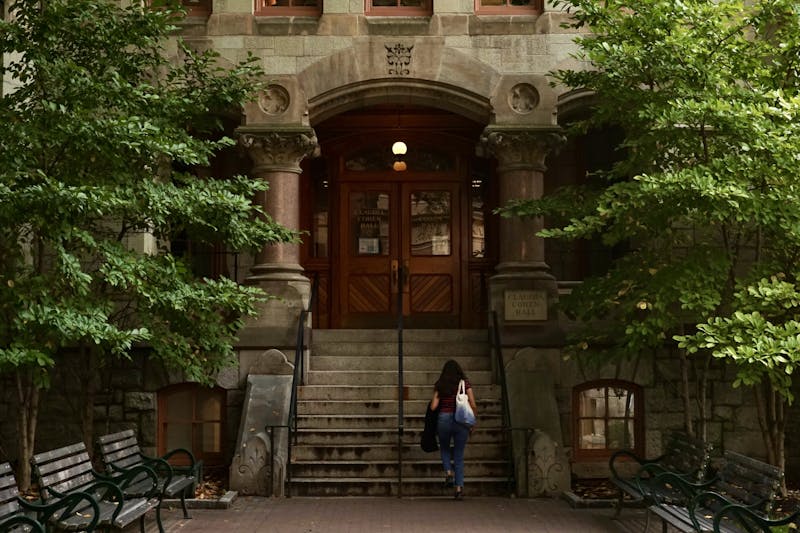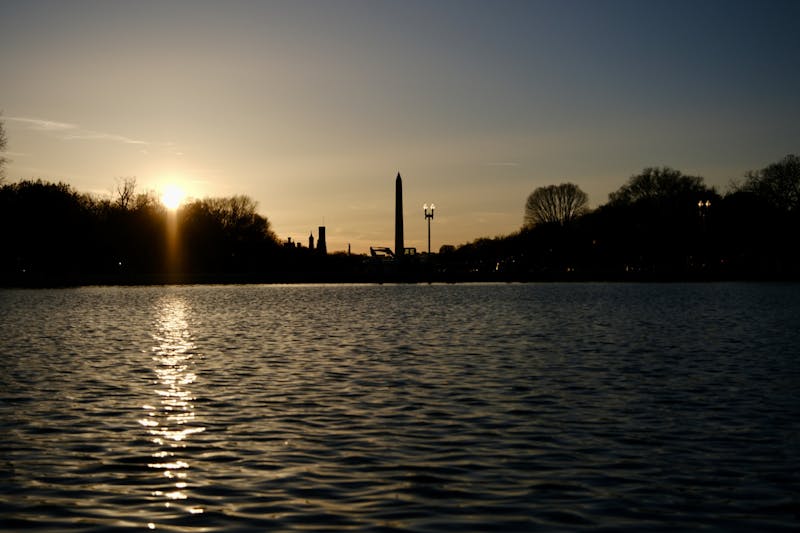
Penn Park boasts 24 acres of open space and a host of new athletic facilities, but some of its most valuable assets are hidden from view.
The park, which officially opens Thursday, will add 14 acres to Penn’s campus and increase the University’s green space by 20 percent.
Converted from an asphalt-paved parking lot, Penn Park now features a variety of vegetation that has been selected based on the area’s natural ecosystem.
An underground cistern for irrigation and a synthetic turf are among the park’s sustainable initiatives. Park restrooms are equipped with low-flow faucets and low-flush toilets and urinals to reduce water usage.
A modern system of “green” lighting, which includes light shields on athletic field lighting, will save 300,000 watts of energy per hourok. Recycled materials like shredded bark mulch, asphalt millings and granite cobbles and curbs were also used throughout the park.
Designing for the future
Penn Park is an “unparalleled creation of open space,” said University Architect David Hollenberg, adding that the most important variables in creating the park were water management, plant life and recycled materials.
Spencer Finch, director of Sustainable Communities for the Pennsylvania Environmental Council, emphasized the role of low-maintenance landscaping. By planting certain species of vegetation and installing energy efficient lighting, “Penn is basically designing for the future,” he said.
Penn Park has a sophisticated drainage system to prevent polluted storm water from entering the Schuylkill River, a major problem for the city.
Since Philadelphia relies on an old combined sewer system, sewage treatment plants do not have the capability to deal with large amounts of rainwater, which often leads to flooding and pollution in the Schuylkill.
The open green space, 300,000-gallon cistern and five stormwater retention basins along the eastern edge of the park are designed to address this problem by absorbing excess rainwater.
Much of the green infrastructure built to manage storm water will also have positive benefits on “wildlife habitat, recreation space and air quality,” said Alex Dews, the Policy and Program Manager in the Mayor’s Office of Sustainability.
The Greening of Philadelphia
Penn Park will also contribute to the progress of Greenworks Philadelphia, a plan created by Mayor Michael Nutter in 2009 to make Philadelphia the greenest city in America by 2015. The park contributes to the city’s goals of providing more recreational space near residential areas and planting more trees.
Dews hopes that the sustainable design aspects of Penn Park will encourage other landholders to build green space elsewhere in the city.
“The success of Penn Park will encourage other institutions — educational, for profit, nonprofit — to look at this idea,” said Michael DiBerardinis, deputy mayor for Environmental and Community Resources and commissioner of Parks and Recreation. “There’s a very strong connection between the city’s sustainability strategy and programs and Penn Park.”
Teaching sustainability
However, neither Dews nor DiBerardinis have plans to use Penn Park as an educational tool to encourage sustainability in Philadelphia.
“When things are not visible, people are less likely to be curious about them,” Dews said, though he mentioned there has been a focus on increasing awareness of the underground cistern system.
Co-Director of Penn Environmental Group and College sophomore Madison Roberts agreed that while Penn Park would enhance environmentalism from an administrative and facilities perspective, it might not have a large impact on on-campus sustainability education.
The park “stimulates interest more than actual environmental actions,” Roberts said. “I don’t think it will increase environmentalism at Penn because there’s no direct act that students can do as a result of Penn Park other than be outside more.”
However, Penn Park will create an important connection between University City and Center City. According to Finch, Philadelphia residents were afraid to cross the bridge as recently as 15-20 years ago.
“By creating the right environment, you make it sustainable from many different standpoints, including safety,” Finch said.
Penn Park “makes the riverfront a showpiece for Philadelphia,” Dews added. “It’s an example of how far you can come when you have a concerted effort to turn this space into something that everyone can take advantage of.”
The Daily Pennsylvanian is an independent, student-run newspaper. Please consider making a donation to support the coverage that shapes the University. Your generosity ensures a future of strong journalism at Penn.
DonatePlease note All comments are eligible for publication in The Daily Pennsylvanian.







